
Transforming a complex network of digital products into a one-stop portal for members, policy makers, and the public
NACSA
Here’s how Mightybytes helped a national education association redesign their website, integrate functionality with a new CRM and email system, and maintain quality control over new charter school applications.
Mightybytes took the time to get to know our organization, the nuances of our data, and the problem we wanted to tackle. Their responsiveness and ‘can do’ attitude helped us produce a tool that is both sophisticated and user-friendly under an ambitious timeline.
Elisa Westapher | Director of Authorizer Development | NACSA

Key
Points
8
Separate Systems
NACSA's previous website used 8 disparate systems that were difficult for their team to manage.
42
States
The Charter Operator Tracker, NACSA's custom web application, includes charter operators in 42 states.
1
Million
One of NACSA’s missions is to provide 1 million more children the chance to attend a school that will prepare them for success.
The National Association of Charter School Authorizers (NACSA) asked Mightybytes to help them transform eight disparate systems into an easy to understand user experience that would drive revenue, and
NACSA ensures that charter schools across the United States adhere to higher standards of quality, performance, and effectiveness in education. They are committed to protecting the rights of students and closing schools that don’t adhere to expectations set forth in their principles and standards. NACSA’s online products were fractured across eight separate platforms, most of which didn’t talk to each other. The messaging and design of these platforms were also text-heavy and confusing to navigate. As a result, NACSA’s member resources were hard to find, and their paid consulting services were buried, which had a direct impact on their bottom line.
When we began working with NACSA, our first task was to help their senior team define audiences and prioritize project goals, then get buy-in for the new system at all levels of the organization. Once detailed requirements for project success were defined, the project was built out in two phases.
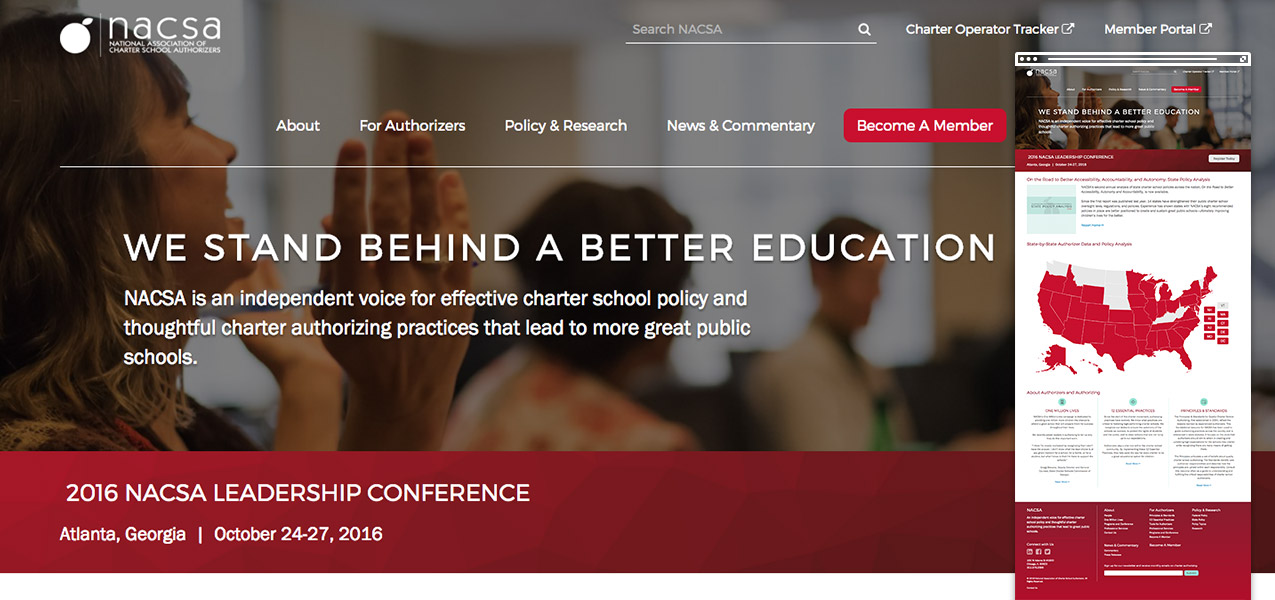
Phase
One
During the first phase we designed and built a minimum viable product (MVP) in time to launch before their annual conference. The new visual design is clean and modern with much more intuitive navigation that makes content easier to find. Our component-based design approach allowed NACSA site admins to mix and match page elements on-the-fly to create new page types. We created a range of component styles for common content types and display patterns, including featured images, banners, cards, and icons. The NACSA team can now build entirely new page types by assembling different components, which saves time, offers increased flexibility, and helps the website evolve as their brand does.
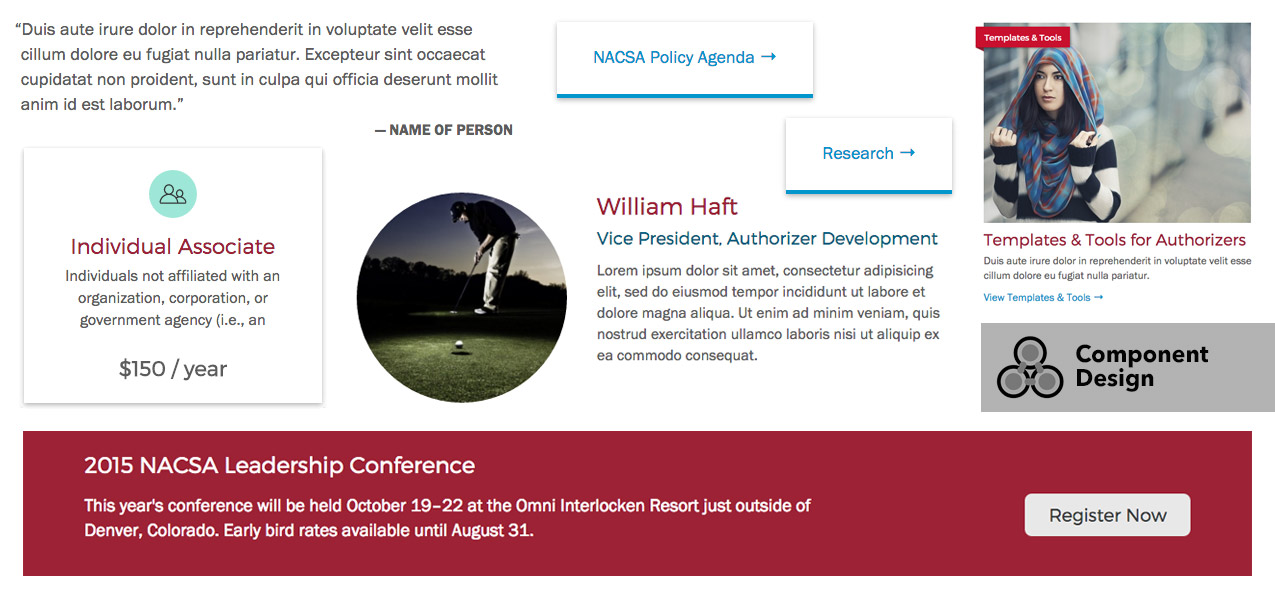
Phase
Two
The second phase was to build out integrated functionality with a new CRM and email system. After assessing their needs, we implemented a new CRM using Presspoint, which works seamlessly with WordPress and Mailchimp, their preferred email marketing software. This allowed the NACSA team to easily access important member data within an integrated system rather than through numerous systems that don’t talk to each other. We also trained their team on how to effectively use the new tools.
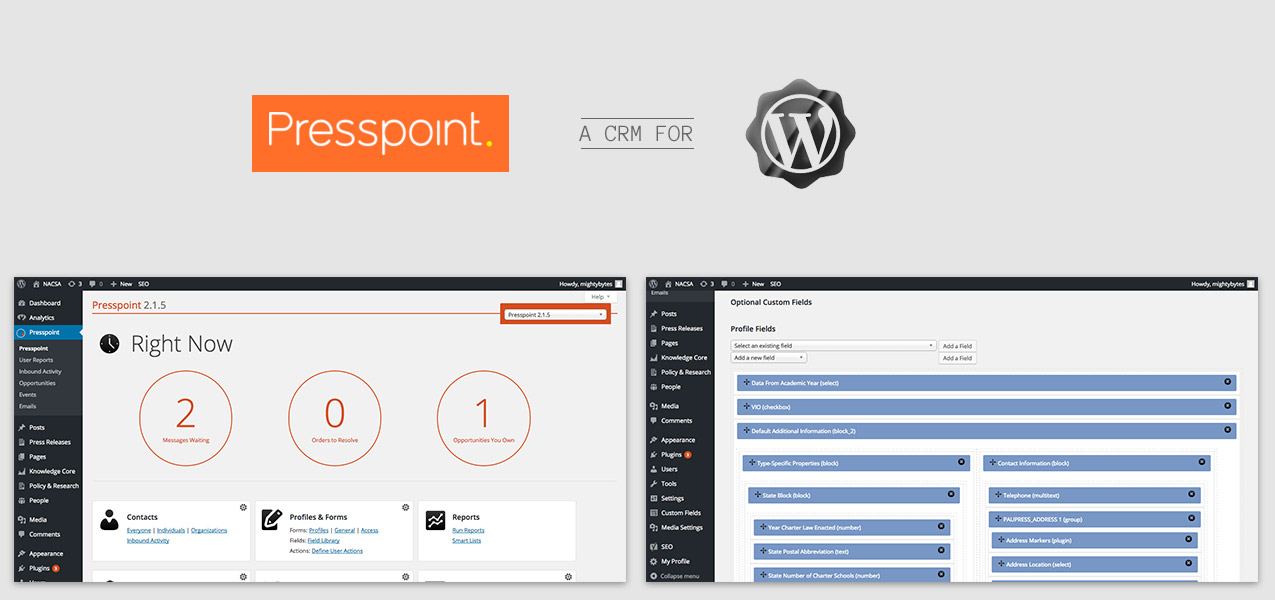
NACSA now has three integrated platforms instead of eight disparate platforms, and their workflow for managing member relationships and email marketing campaigns is much improved. We continue to work with them to improve workflows and define new features for both users and site administrators.
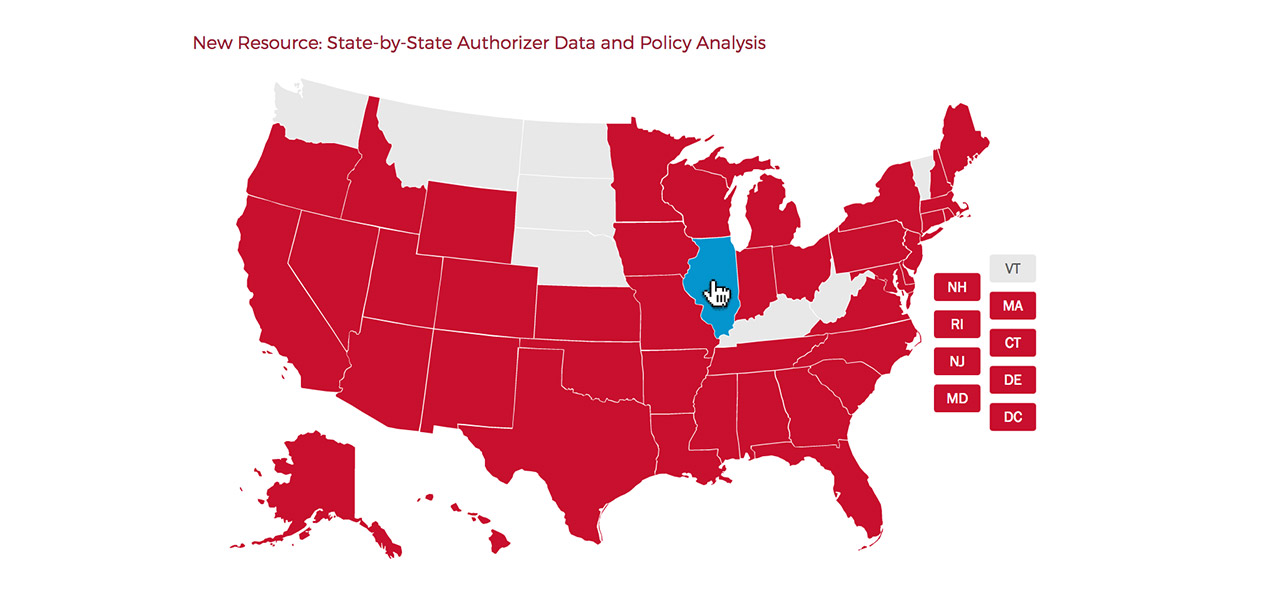
In addition to integrating multiple third party software platforms into NACSA’s website, we also built a custom web application called the Charter Operator Tracker with a searchable database that provides standardized, visually compelling data about charter school operators and the schools they run, including academic performance and school closure rates.
In some states, nearly half of charter schools are run by “charter operators” like Bright Horizons and Academica, but charter school authorizers—those responsible for maintaining educational quality and approving new charter schools—struggle to find objective information about these operators.
NACSA wanted to create a searchable database to provide standardized, visually compelling data about charter school operators and the schools they run, including academic performance and school closure rates, data that had previously been difficult to find.
NACSA
Charter Operator Tracker
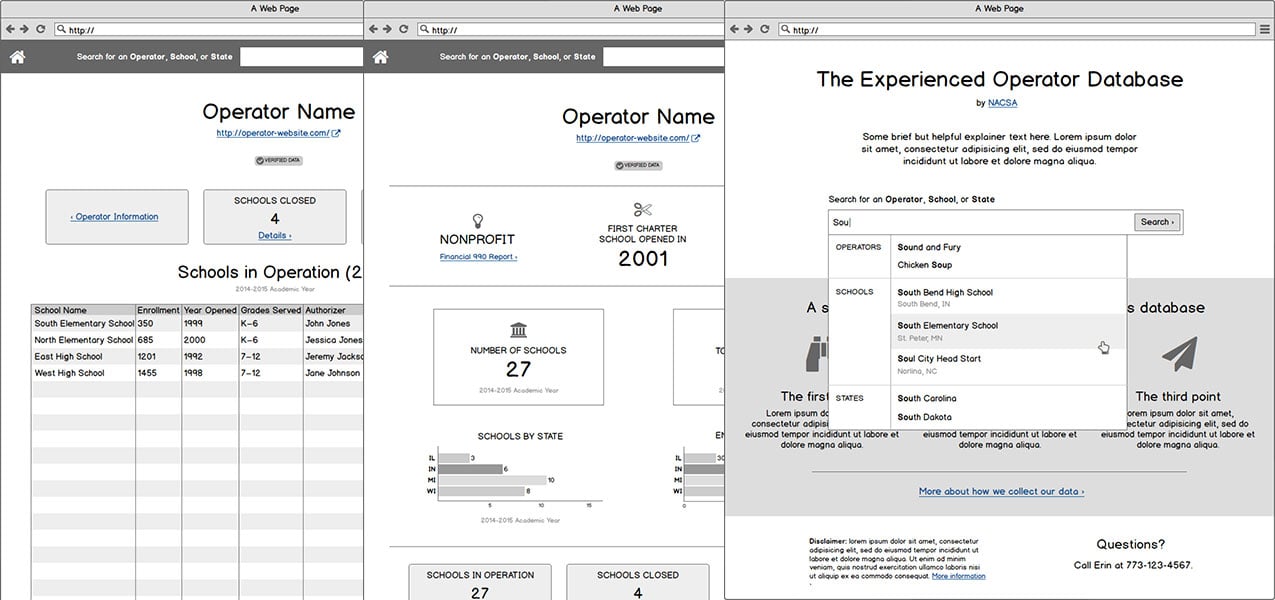
We kicked off this project by facilitating three discovery workshops that included the NACSA team and a Mightybytes project manager, designer, and developer. At the end of these sessions, we had
- mapped out user stories
- developed a database model, and
- created a paper prototype.
Then we transformed the paper prototype into something target users could interact with for user testing.
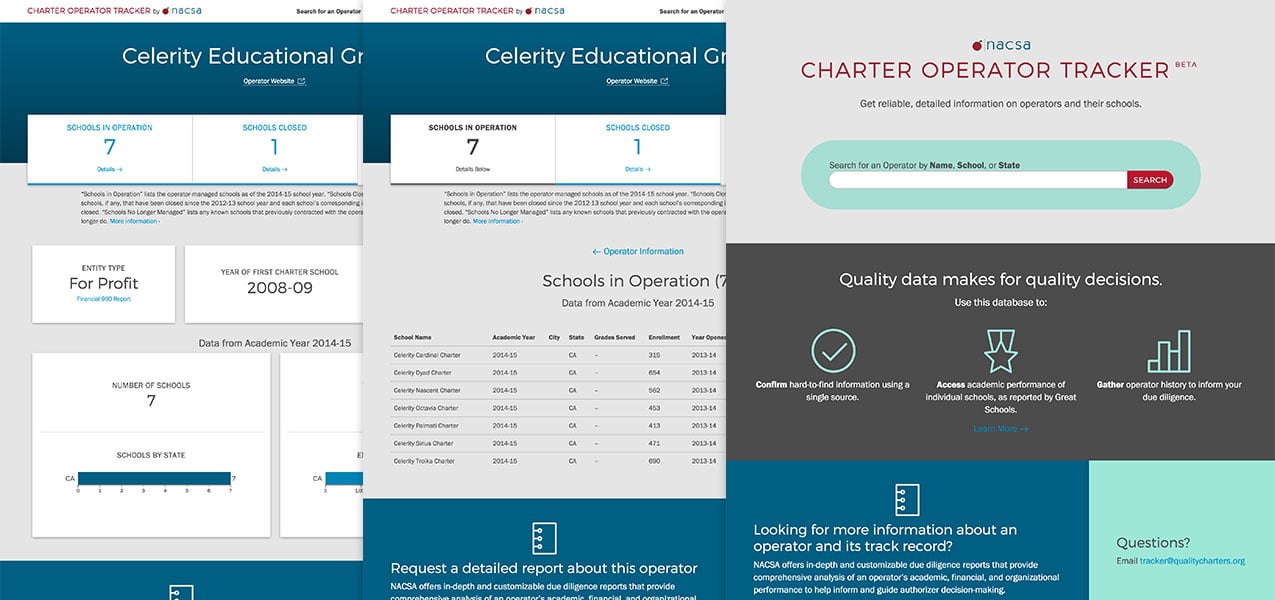
We housed Charter Operator Tracker on the Heroku platform and used D3 libraries for the data visualization. The visual design happened entirely in the browser, so that the product owners could make rapid, iterative decisions without burning time and budget on static design comps. Technology decisions were made with the goal of laying an easily scalable backend foundation, so that a Phase two expansion could happen quickly and efficiently.
The Charter Operator Tracker was launched to coincide with Florida’s deadline for charter operators to submit applications for new schools. Now the decision makers responsible for authorizing new schools have a powerful new source of data to guide their decision making process.
Still have questions about our work?
Schedule a free strategy call with Tim.
